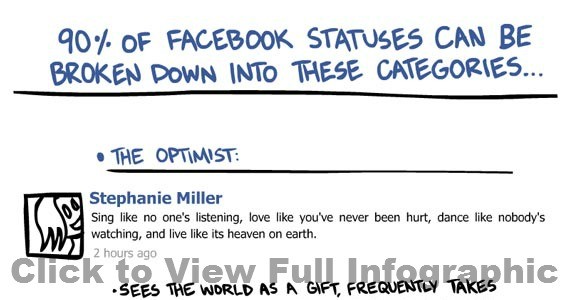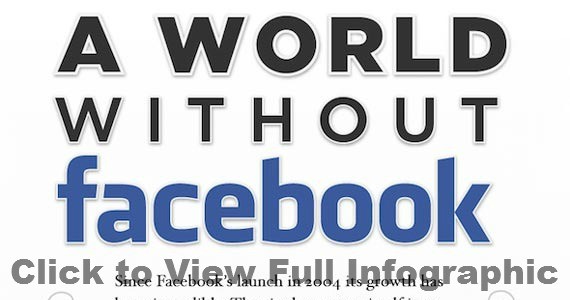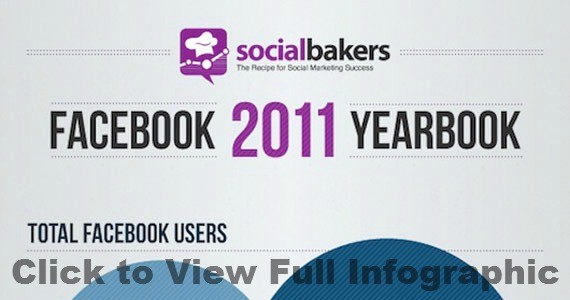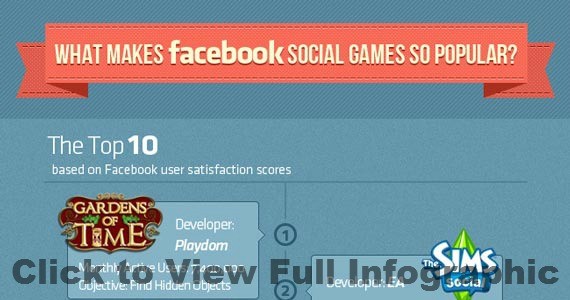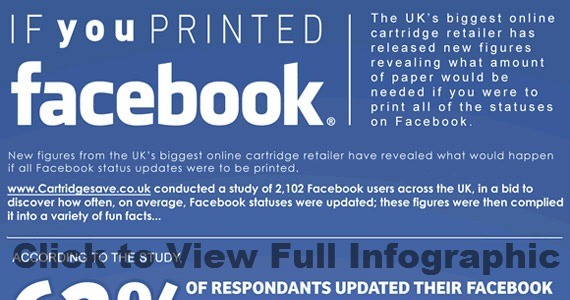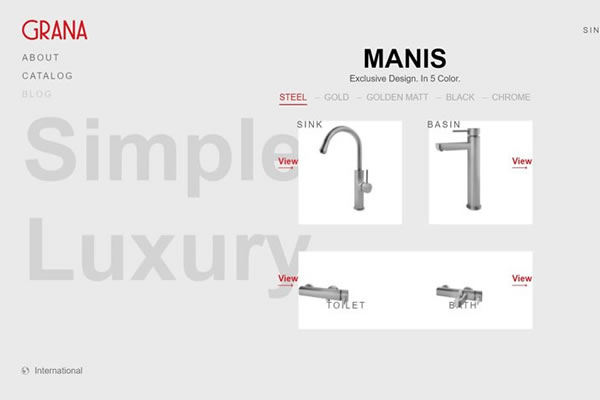Nowadays, one can no longer imagine how to catch up with friends and contacts without social networking. Social networking helped us become closer to our friends, even when they are a thousand miles away. Through the World Wide Web, we are able to connect with people from around the world, making it easy to keep in touch with friends and family. Social networking now is a billion dollar industry, but we can barely remember when it didn’t exist.
You might also like to read about the history of Adobe Photoshop, Apple, Web Forms, Google Doodles, or Online Shopping.
Let’s take a trip back in time and discover the history of social networking, and how it grew, one step at a time. Later in the article you will also see the history of internet and how social networks can help you succeed.
Table of Contents:
- Social Networking as we know it today
- History Of Social Networking: Early Beginnings
- The Future of Social Networking
- Wayback Machine – History of Internet
- How To Grow as a Designer by Building Your Own Network
- 3 Reasons Why Web Designers And Developers Must Learn Online Marketing
- The Rise Of Facebook: Path to World Domination
Social Networking as We Know it Today
Today, social networking is an essential part of life for people from around the world. Social networking is a form of social media, used for either interactive, educational, informational or entertaining purposes. Social media comes in many forms, but all of them are related: blogs, forums, podcasts, photo sharing, social bookmarking, widgets, video, just to name a few.
Today, social networking websites allow users to make profiles, upload photos and videos, and interact with friends and family. Social networking is a tool to join groups, learn about latest news and events, play games, chat and to share music and video. The top social networking sites of today are: MySpace, Facebook and Twitter.

Image by Svilen001
History Of Social Networking: Early Beginnings
People always want to communicate with other people. People used to just visit the people they wanted to see. The longer the distance, the harder it was to communicate.
Throughout history, people came up with various ways of communicating: through post, pigeons, telegraph, light signals and telephone. Getting responses a few hundred years ago meant waiting for months or a year. Thankfully humans never stopped looking for a faster method to communication. The 20th century brought us the internet.
Social networking was born one day in 1971, when the first email was sent. The two computers were sitting right next to each other. The message said “qwertyuiop’.

In 1978, the BBS–or Bulletin Board System, was created. The BBS hosted on personal computers, where users need to dial in via the modem of a host computer, and exchanging data through phone lines to other users. The BBS was the first system that lets users interact with one another through the internet. It was slow, but it was a good start, and only one user could log in at a time.
Later that year, the very first web browsers were distributed using Usenet, the earliest online bulletin board of the time. Usenet was created by Jim Ellis & Tom Truscott, where users posted news, articles and funny posts. Unlike the BBS and forums, Usenet did not have a ‘central server’. This concept soon inspired the ‘Groups’ feature we know today; such as Yahoo! Groups, Google Groups and Facebook Groups.The first ever version of instant messaging was around 1988, called IRC or Internet Relay Chat. IRC was Unix-based then, and thus exclusive only to a few people. IRC was used for communications, as well as link and fire sharing. Soon the earliest copies of web browsers were distributed via Usenet.
The First Social Networking Site
In 1994, the first social networking site was created, Geocities. Geocities allowed the users to create and customize their own web sites, grouping them into different ‘cities’ based on the site’s content. The following year, TheGlobe.com launched to public, giving users the ability to interact with people who have the same hobbies and interests, and to publish their own content.
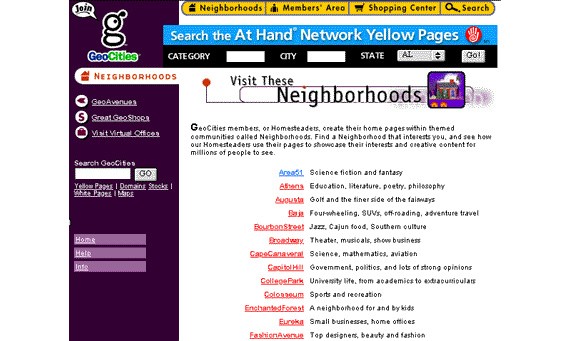
A few years later, AOL Instant Messenger and SixDegrees.com launched in 1997. Instant messaging was born, giving users the freedom to chat with friends, and create a profile. AOL was probably the true precursor to today’s social networking sites. The member profiles allowed its users to write a biography and share details about themselves. The profiles were searchable so people could look your profile up. It was the most innovative feature at that time.
Other sites followed suit, creating social networking sites such as Classmates, Friendzy, Hi-5, just to name a few. Many were dating sites, while some were more niche driven. For example, Classmates allowed users to reconnect with old classmates, pals, bullies and crushes. It was a hit immediately, and today Classmates still has some 40,000,000 registered users.
SixDegrees.com is one of the earliest social networking sites, but did not gain the same success. The idea is based on the theory that people are separated by no more than six degrees from one another. It also allowed users to create profiles, make groups, search and invite friends. However, they encouraged members to invite more people to the site and had too many membership drives. Many people complained that the membership invitations were spam, filling up their websites with junk. It was sold in 2001 for $125 million but completely shut down the year after.
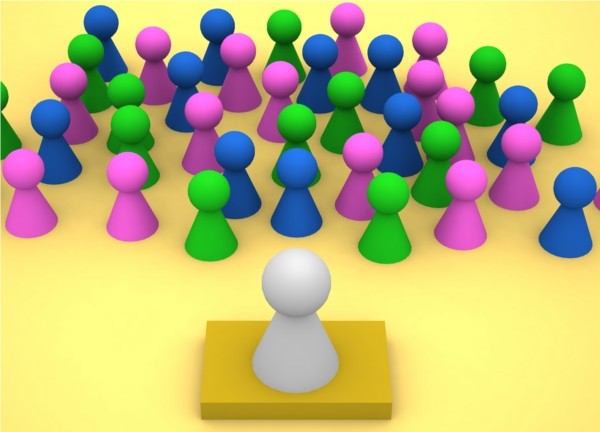
Image by Svilen001
Other niche-driven sites are AsianAvenue–established in 1997. By 1999, BlackPlanet was established and in 2000, MiGente.com for Hispanic servers. In the mid-1990s, the internet was at its full force. Yahoo! was established and Amazon had begun selling books. Every household was getting a PC. The World Wide Web showed no signs of slowing down.
New Millenium: New Era in Social Networking
The first modern social networking site that we define today is Friendster. It also uses the degree of separation concept similar to SixDegrees, but dubbed it ‘Circle of Friends’. Friendster was basically a dating site that wasn’t all about dating. In the first 3 months, Friendster was able to amass 3,000,000 users. This means 1 in 126 web users were Friendster members at the time.
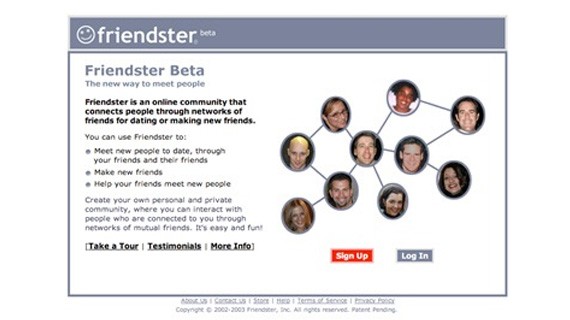
Social Networking went to maturity stage upon the launching of Friendster.
Soon MySpace followed suit, who cloned Friendster. It was launched after only 10 days of coding. It soon became more popular than Friendster. MySpace gave users more freedom than Friendster when it came to customization; with music, videos and a hipper online environment. It garnered 90 million registered users–and even if it is no longer the top networking site in the world, it is still a favorite in the USA. The glory days of Friendster have passed, and its popularity is now surpassed by MySpace and Facebook. Today most of Friendster’s traffic comes from Asia, especially Indonesia and the Philippines.
Another site with considerable success is LinkedIn. It was established in 2003, and took a more professional and business approach to social networking. Other sites focused on getting dates, having friends, and reuniting with old classmates, but LinkedIn focused on building business contacts and professionals. Today LinkedIn has 30 million registered members.
Facebook came into the social networking scene a little bit later. It was launched in 2004, and the primary intent was to connect US college students. Facebook first began with Mark Zuckerberg’s alma mater Harvard. At first it was exclusive, and you could only join in if you had been invited by a member of Facebook. The ‘exclusive’ feature proved to be a success, and in its first month, over half of the 19,500 Harvard students signed up. Two years later, the campus-only networking site became open to the public. In 2008, Facebook surpassed MySpace and Friendster as the leading social networking site. It now has over 150 million members around the globe.
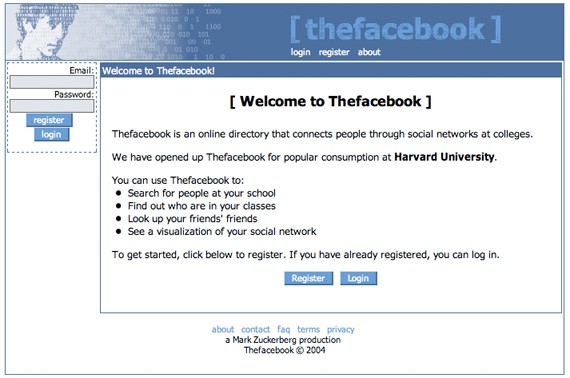
The Future of Social Networking
Many people are still speculating about the future of social networking. Will it be the ultimate communication tool of the future? Or just like the dot-com crash, will it crash and burn eventually?
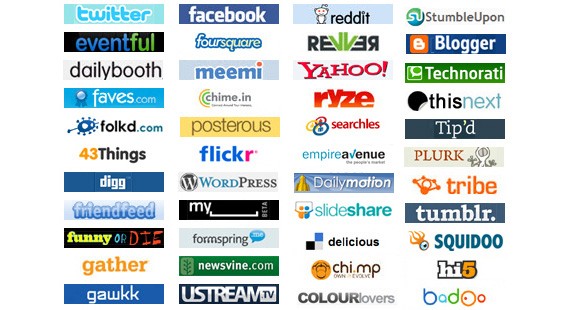
Today, there are now almost 600 social networking sites on the Internet (Image from KnowEm)
The economic crisis was bad, closing down many small and large businesses and leaving many people jobless. Nonetheless, it still didn’t stop users from using the internet, and new sites are still launched today. But how about the people’s interests? It is true that most networking sites may seem promising and fun at first, but soon the fad cools down and people start to get bored.
Today’s social networking sites are like yesterday’s front page headlines. Most of us now get news and information through the internet–especially the younger generation. Social networking has become very mobile, from our PCs to our smart phones. Thus social networking has become more ‘intrusive’. Do we really want to know what your office mate had for breakfast at Subway or your third degree cousin just lost her car keys?
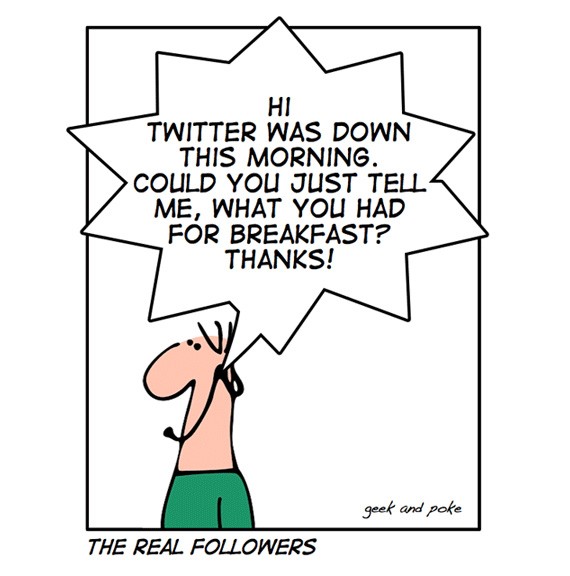
Will Facebook still be the king of social networking? That, we cannot be sure of. Just last year Google made efforts with making its own social networking site, which became very boring and very empty. As of this writing Facebook already has over 600 million active users. But many people suggest that social networking is more of a fad, something that we will get tired of, and will soon switch to a newer site soon enough. In five years time, Facebook might be replaced by a newer web site–or it might be the only one. The thing is, the future is very hard to predict, especially for social media. The scope and environment of social networking is highly unpredictable, determined by users’ online actions and behaviors.
We have seen the history of social networks, but did you ever wondered about the history of the internet? If you did, then you just have to read the next section.
Wayback Machine – History of Internet
For this time I wanted to share one more fun site. This website is building a digital library of Internet sites and other digital form resources. As for me – this resource page caught my interest, because in 1998 or 2000 I didn’t even know much about Internet – now we have a chance to look how design and web development is evolving. There is 85 billion pages out there.
Just type in a URL in the form and go way back..!
Click on image below or type to go way back – http://www.archive.org/
For example I wanted to look how apple.com’s design looked years ago:
1996.
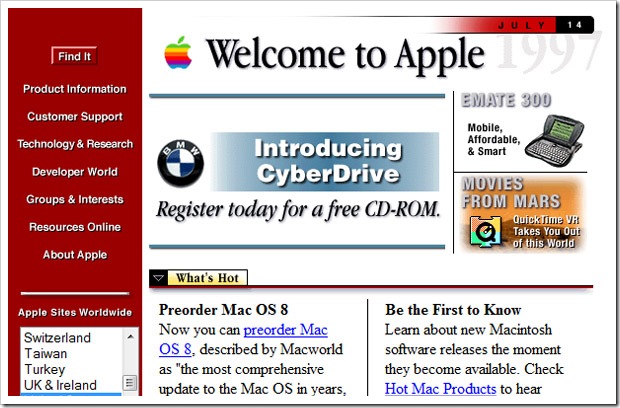
1998.
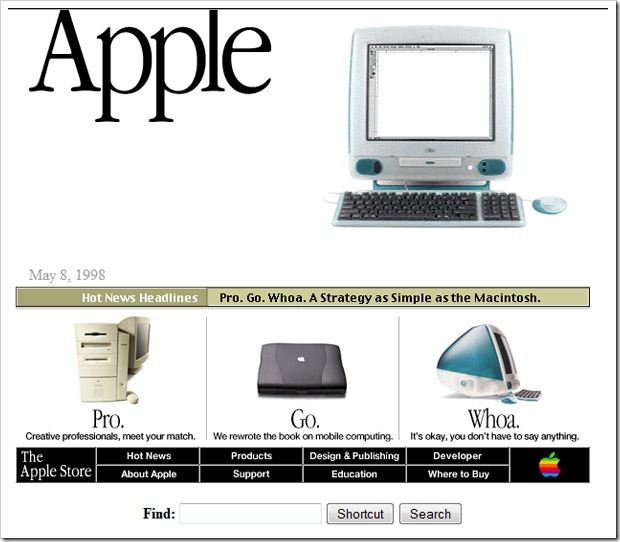
1999.

2000.
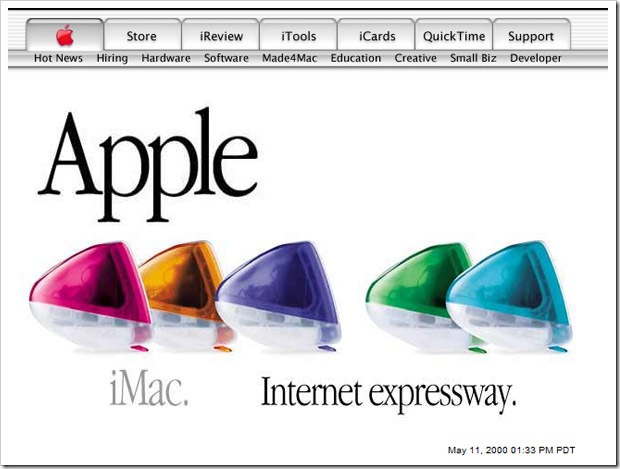
2001.
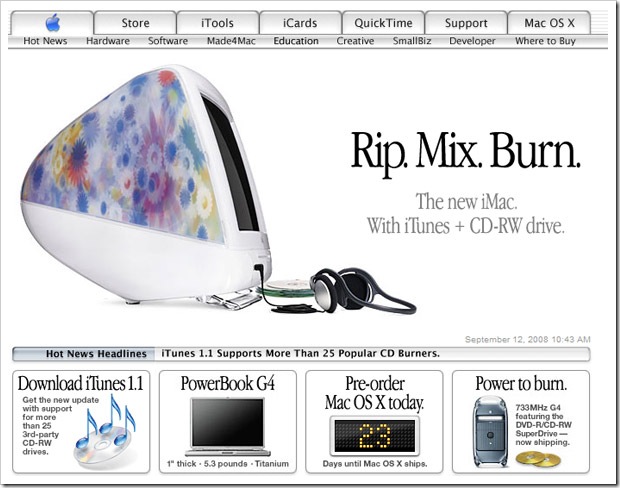
2006.
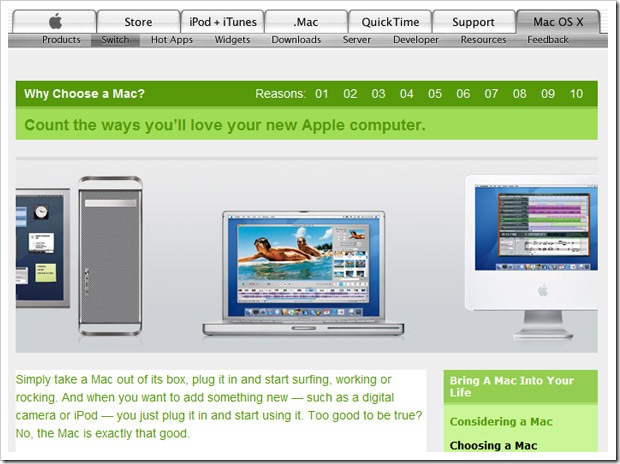
2007.
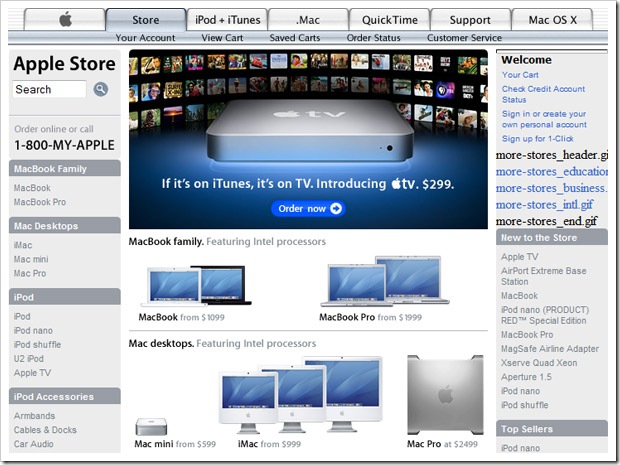
And finally modern days..:) Year 2008.
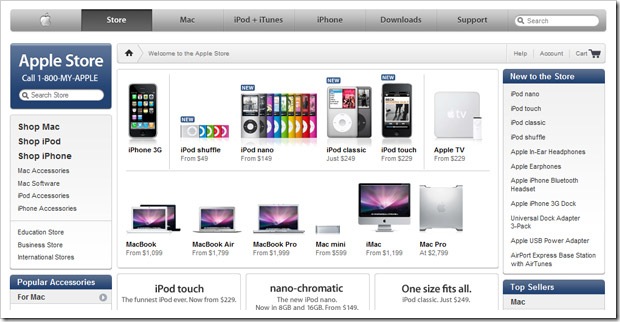
I looked out for google.com site too..:) Interesting to go back to past!
Google in Year 1998

You can choose advanced search for specified dates, convert page to PDF, etc.
Hope You will enjoy this one valuable and fun web site.
The history lesson is behind us. As a web designer or even more as a freelancer you have to do a lot of social networking to increase your chances of success. Learn how in the next and few following chapters.
How To Grow as a Designer by Building Your Own Network
Being part of a web design and development community offers you many possibilities and chances for self-development. Each one of us knows about these communities and, at some point in time or another, wished or even was part of one of them. Knowing other individuals in your industry is something I recommend to everybody, as you can get a lot of help from such experts. Communities are not only created around people, but also around offline web design agencies, which give you even a better set of possibilities and a different network that you can use during your career.
Design, development, social media, marketing or blogging (part of the web in general) are industries evolving a lot lately and this will not stop soon. Working by yourself was an option more than five years ago, but today things have changed and many of us have started to outsource in order to finish projects faster and earn more money. Being part of such a network or community can help you develop your skills and bring new people around you. In this article I will talk about why it is important to keep yourself close to these networks and in the end we will take a look at some of the well-known ones as of this period. Moreover, we will see if building your own network is an option.

Image by CubaGallery.
Main asset
A community is important because it brings us all together and this helps us to grow individually and as a group of experts. Fashion, football (and sports in general), computers and other devices – some niches off the top of my head that enjoy large support communities. And we, designers and developers, have that too.
Communities are important and helpful for personal development because they feature tutorials, forums, posts, advice, tips and so on. If you do not have a university degree, there is a high chance that all you know about designing is due to one of these communities. People share their knowledge, often for free. As a famous advertising campaign says, sharing is caring. It seems we all care a lot about each other in this industry.
A good example could be the articles we post here on 1WD. We take our time to write articles for you, while others from the community come and share even more in the comments. This is one of the ways to learn a lot – by reading and interacting with people from your own industry.
The trick of our field is that everything evolves and changes fast. If you don’t pay attention to the trends, you will find yourself knowing too much about old stuff and not enough about what is really important. Spending money all the time on books would be ineffective for us, as many books get renewed and improved two-three times per year, due to the industry advancing so fast. In order to avoid spending so much money, you can always turn your attention to networks and communities on the internet.
If you look at it from another point of view, being part of design communities can get even more helpful. Try to look back and remember how many frameworks, resources and tools you’ve used – many of them provided by these communities. And then try to remember how many of them were free of charge. Now imagine how much time or money you would have to spend to use those things if you needed to develop them yourself or to hire someone to do it for you. And let’s move our attention to the things that are not free. Even the premium resources are delivered very cheap compared to the market price; all this thanks to the design and development communities.
WordPress, Boilerplate, CodeIgniter, Drupal, GIMP, Inkscape – how many times have you used these open-source tools? It may come as a surprise to you, but all of them were developed by these communities at some point or another. Now don’t get me wrong, I am sure WordPress is a money powerhouse today, but looking back in the past, it all started as a community project.
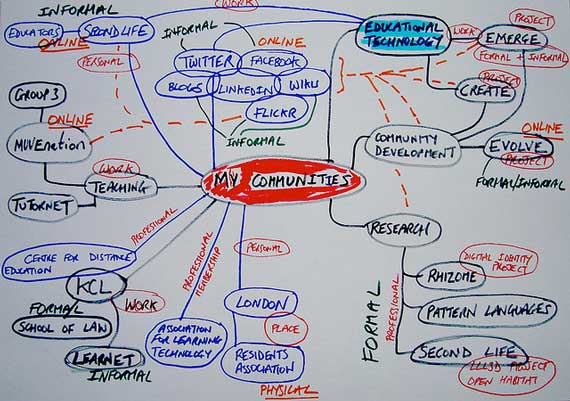
Image by steven w.
And to top it off, communities are helpful at something else as well – and that is probably the most important asset. Getting recommended there happens quite often and outsourcing happens most of the time inside these communities. Only if and after not finding someone suitable, freelancers use third-party websites to search for individuals to work with, otherwise everything starts off from communities like forums or blogs.
Types of networks
All of us can create our own communities or networks, but most of us prefer to use the ones already populated with experts and people with years of experience in the field. If you are a freelancer developing small jQuery sliders, you can offer them on your website, which is likely to bring you some success, or to collaborate with a huge network such as Nettuts, which will probably bring you a lot of referrals and possibly even money.
However, I am sure all of us start from social media. We share lots of interesting links on Facebook and Twitter and it is probably where lone developers or designers start.
Blogs are also considered networks. Not so much personal blogs as the ones related to a specific topic or an industry. 1stWebDesigner is an example. With a blog getting bigger, the community behind it gets bigger as well. All these blogs turned into communities develop side-projects, just as here at 1WD we publish eBooks for Amazon’s Kindle.
Some other popular communities might be forums (CodingForums is hot), social networks, web pages and so on.
What more is in it for you?
I am sure most of you know the answer to this question by now. We talked about advantages a bit earlier. But there is more than just open-source tools and support. You can gain a lot by starting such a community yourself, by creating an application or an open-source tool people can use. By getting involved, others can hear about you and your reputation within the industry will grow as fast as you never experienced before. If you want to build a community, there are some steps you might want to start with – it is usually how everybody starts. It is not a success guaranteed method, but it will aid your cause.
Knowing how to use social media properly will give you a huge advantage over the others. Don’t forget that your short-term goal is to get as many people as you can interested in your product. There is no better way of doing this than using Twitter, Facebook, Digg and the other social sharing giants. Use all these to share links, tips, resources and ask for feedback. Engage the community as this will make a whole buzz around you and it will bring you even more interest.
If you like writing, blogging is also a way to aid your start-up. It doesn’t even have to be a full-time job, but having a blog that you update once or twice per week will keep people interested. Experts advise bloggers to update the content far more often than this, but don’t forget you are not a blogger, rather you are a developer or a designer. Blogging is only a way to help yourself, you don’t look to earn money out of it.
If you are involved in other communities and networks, this will improve your reputation as well. Be involved in as many as you can, talk to people, share their links, interact with them over social media and so on. Getting involved is one of the best ways to get recognized and earn people’s respect.

Image by Doug88888.
I read an article a few months ago about social media strategies. The author mentioned the fact that a retweet is not as effective as when a personal comment is included. It also makes a lot of sense. You need not create articles that are robot sharing, rather you need to add a personal touch to them when sharing. Real popular communities are based on active people who get involved on a professional and personal level, not on social media robots.
If you have knowledge of something worth sharing, don’t keep it to yourself. Be selfless and give advice. Help people if they need it. Offer them tips and show them the right path if you’ve been there before. It is also about earning respect and getting recognized. You might not get much in the short-term, but you will earn a lot in the long-term out of being generous.
If you have your own community, providing tools or services for free will always bring you traffic and referrals. People love free stuff, it is a general and an easy-to-notice behavior. Doing something to improve the communities will bring you appreciation.
Upon providing freebies, you can also create something you sell for a cheap price. This will not only help you earn some money, but it will show your community you also do more quality work – not that free stuff are not of good quality, but there is a reason behind them being free. If you think you can make something that people will pay for, go for it!
Examples of networks
I think we talked a lot about the advantages of joining a community and it should be clear for you that you get much more out of it than out of any other activity on the internet.
Now, let’s take a look at the most popular and well-working web design and development networks. I am sure you heard about most of them, but we recap just for the ones who are new to the industry and look for inspiration.
- It is fairly impossible not to start with the Smashing Magazine Network. They are an example of professionalism and represent something that many other communities can only long for. They do not only have blogs about web design, web development, graphics and vectors, but also a job board. Parts of their networks are also sections such as “Coding”, “UX Design” and “WordPress”. They focus on everything a newbie or an expert would like to have knowledge of and this is the place to get inspired if you wish to build your own network some time.
- Envato is another great example. The network features many websites related to the topic and, it’s quite impossible not to have heard of, the Tuts+ network. Envato is probably the largest community out there and is built on several smaller communities such as FreelanceSwitch, ThemeForest and PSDTuts. They really talk about everything in the industry and not keeping an eye on them is definitely a mistake for an individual interested in the web.
- One Mighty Roar is a bit smaller than the others – they are actually in their beginning phase, but they become more popular day by day. Their smaller community called “Build Internet” is a web development blog and is where it all started. After the huge success they had, One Mighty Roar opened their own offline web development agency.
- Fuel Brand Network is the last example in this list. It is a network composed of several smaller web pages about coding, blogging and others. They are all under the same visual identity, but with a different color, and have a lovely overall brand.
Bottom line
There are clear advantages not only from building your own network, but also from being part of ones that already exist on the internet. Creating such a powerful community is not easy, not anybody can pull off such a huge task. The examples above show that the ones who actually manage to do it, do not only help themselves, but tens of thousands of designers and developers all over the world.
I am sure being able to provide help and resources to so many people gives you a pleasant feeling of personal fulfillment and earns you a lot of respect from others.
Even if you do not think you are able to build your own network, it is definitely worth joining some others and helping people there. The truth is that an individual needs huge resources to be able to build and maintain such a community and not everybody has them. If after this article you think even of just being part of a design or development network and contributing as much as possible, then my goal is achieved.
Until next time… are you part of online communities? Have you ever thought of building your own, or you just want to help others using networks already established? Which do you think are the challenges of building such a community?
The next section will present to you 3 main reasons why you as a web designer, should learn social marketing. Ready for your next adventure? Let’s start then.
3 Reasons Why Web Designers And Developers Must Learn Online Marketing
I’ve interviewed quite a few successful web designers and developers over the last couple of months. One thing that they all seem to have in common is that they took time to learn about online marketing and have built a strong online presence. This made me wonder, why don’t more people do the same thing? I think that if you are a web designer or a developer who understands, and implements, online marketing, you not only have a tremendous advantage over your competition, but also a realistic shot of creating a very nice lifestyle over a couple of years. Why?
When you are not only good at your craft, but also good at online marketing, that combination of skill and knowledge allows you to do three things:
1. Get more clients

Let me share with you one of my own experiences.
I’m not a web designer myself, so when I realized that I will need a landing page for my website in order to build an e-mail list, I went to one of the freelance job boards and posted a job.
I got a lot of responses straight away.
Here’s an excerpt from a real bid on that project:
“I am a freelancer web Designer with having more than five year experience in Website designs, HTML, XHTML, Web2.0, J-Query, HTML5, Layout , W3c Standard, CSS , I phone & Android UI Design, environment with projects involving Requirement gathering, High level design, low level design, e-commerce, Maganto, Joomla Home page Design and theme integration.”
That sounds awesome, right? Wrong!
The problem is that the person making this bid doesn’t understand me (the client) at all. I want to build an online business, but I don’t know a thing about web design, therefore I’m looking for a web designer to do it for me. Who is more likely to get the job:
- A web designer who talks about HTML5, jQuery and W3C Standards.
- A web designer who talks about conversion rates, e-mail list and sales.
I really don’t care about “HTML, XHTML, Web2.0, jQuery, HTML5, Layout , W3C Standards, CSS , iPhone & Android UI Design.” In fact, I don’t even know what most of these words mean. However, when it comes to conversion rates and building an e-mail list…. THAT’S what I’m interested in!
You might think that it’s only me, but really, most people who hire web designers are like that.
Ramit Sethi is the guy who, among other things (such as writing a NYT bestselling book and running a popular blog), has helped thousands of people all over the world earn money via freelancing.
Here are his thoughts on the topic:
“Most people focus on features.
They say: “Here’s what you get with my web design service: you get a hosting account, you get ten pages design, you get this, you get that”.
Well…the client doesn’t care!
What do the clients want fundamentally? They want to make more money, they want to get more clients, they want to spend less time, they just want it handled. You can find this out by talking to them and doing research.
This is where you start doing your homework. You figure out what it is that they want and use it to present your services as a benefit. So, instead of saying “You get 10 web pages”, you say: “Look, my goal is to help you increase the number of subscribers by 25%” or, better yet, “My goal is to help you increase the revenue by 15%”. That is a benefit. Nobody cares about how many pages it is, or how much time you’re going to spend on it or what software you’ll use. They don’t care about all that. They want more money, more clients, in less time. Focus on what THEY want, not what you want.”
The point is that most clients who hire web designers hire them for business reasons. Consequently, if you want to impress those clients, you have to present them with solutions that will help them achieve their business goals. This is why you need to understand online marketing.
There are loads and loads of web designers who can make pretty websites. There are very few web designers who know how to get their clients more sales.
Who do you think will be able to get better clients and charge higher rates?
Exactly.
2. Build your brand
The biggest headache for freelancers all over the world is the “How to get paying clients?” issue. Think about it: wouldn’t it be nice if clients would come to you, ready to pay whatever you’re asking?
This is not some fantasy from the unicorn land, this is reality for people who have built strong personal brands.
Okay, so how do you build a personal brand online?
Here’s a summary of the process:
- You build a popular blog
- You build a decent social media following
- You do all kinds of “extra-curricular” activities such as speaking in conferences, etc.
Note: These are only the key points, the process is much more complicated than that, it requires a lot of business knowledge and perseverance.
All of that helps you to do two things:
- Establish yourself as an expert
- Get a lot of exposure
What happens when people need to get work done and they see someone who is a recognized expert in that particular field?
They want to hire that person.
It takes a lot of time and effort to build a personal brand, but the payoff is well worth it. Time is going to pass anyway, right?
However, you probably won’t be able to do that without decent online marketing knowledge, because “write good stuff and they’ll come” simply doesn’t work anymore with so many people writing good stuff. You have to know the rules of the game in order to win it.
I suggest you watch the TED talk “Building a personal brand” by Jacob Cass to see how helpful it can be to have a strong online presence.
3. Earn extra income
When you are a freelancer, you know that unexpected things happen, and it’s wise to do everything to make yourself as financially secure as possible. One of the best things you can do is to diversify your streams of income between client work and passive income. I love this excerpt from the interview with Sacha Greif who made over $15 000 from selling his e-book online:
“However, in general, having a source of passive income is important. It’s a must-have for me, because if you’re freelancer, you don’t have much job security. It’s hard to plan for the future without a safety net of some sort. Also, if you’re taking a holiday, or just stopping work for a couple of months, it’s nice to have an additional source of income that keeps going, even if it’s very small, even if it’s a few hundred dollars a month. At least it can cover your food bill or your rent, you know.
It’s important for me personally (although it’s not the only way to do it, you can be very successful without any sort of passive income). I don’t want to say that every designer needs a passive income source, because people would complain if I did, but personally, I think that it’s important.”
It’s really not that hard to create a small stream of passive income when you are already perceived as an expert in your field and have a decent online following. There are a lot of different monetization options, such as creating and selling your own products, selling products made by other people (affiliate marketing) or simply displaying ads on your site.
Wouldn’t it be nice to still have money coming in even when you are not working?
However, keep in mind that passive income aren’t as passive as some people picture it to be, because you have to first put a lot of time and efforts into creating a product and then put a lot of efforts into marketing it and selWling it.
Don’t make these mistakes
There are a lot of people who set out to build an online business. Most of them fail. Sorry, that’s the harsh reality. However, the question is why do they fail?
Here are two of the most common reasons:
1. They underestimate the time and effort required to achieve desired results
In most cases, people get into this expecting to be rolling in the dough in a month or two, which is completely delusional. No wonder they give up in less than six months.
You might have noticed that I’ve mentioned hard work and time quite a few times in this article. Most likely it will take you six to twelve months to gain momentum with your blog and social media following. Once you gain that momentum, you can start thinking about monetizing it in some way. It’s very realistic to build a successful online business in two or three years, however, please be aware of what you’re getting yourself into!
2. They think that it’s enough to be good at their craft
In order to be a successful baker, you have to be good at baking, but in order to run a successful bakery, you need to be good at business first, baking second. Are you following me?
It’s not enough to be a good web designer in order to run a successful web design blog or to sell a lot of copies of your e- book. Yes, sure, you have to know what you’re talking about. However, if no one is listening, it doesn’t matter how genius your ideas are, duh. Want to make money online? Study online marketing.
I’d say that if you have realistic expectations for how much time and efforts it will require, as well as willing to study online marketing and learn the trade, you’re very likely to succeed in building an online business.
Where to start?
Okay, so now you’re probably thinking that it would be kind of cool to learn more about that online marketing stuff, but aren’t sure where to start.
The good news is that you can learn the most important things for free, since there are so many websites that publish free articles on the topic.
However, the problem that new people in the field face is that most of what’s written about online marketing is total BS, which makes it kind of hard to separate nonsenses from legitimate material.
I can solve this problem for you.
It’s really not hard to learn the basics. Read a blog post or two a day. Listen to a podcast while jogging. Attend a webinar now and then. You will be surprised how fast you’re learning without even spending a dime on it. Then, go and apply what you’ve learned.
Who knows, maybe two or three years from now you could run your own online business?
Remember, time will pass anyway, so use it wisely.
Your turn!
Okay, guys, so now I want to hear from you:
- Do you agree that web designers and developers should take time to learn online marketing?
- Or do you think that learning online marketing would be a waste of time?
Share your thoughts in the comments!
To end this article we will look at how Facebook became so powerful.
The Rise Of Facebook: Path to World Domination
Facebook. The social media masterpiece all of us, more or less, use for personal or business reasons. Facebook is considered to, again, more or less rule the internet. This social media monster bringing in clients and prospects to companies, it’s a great tool for businesses and freelancers alike. Facebook will attract one seventh of the World’s population by the end 2012. Everything you would like to have in social media featured by one single company, on a single web page, having a single descriptive word to be assigned yet: dominant.
I am aware of the fact that you can use it, know its basic features and know what it can do for you. I will discuss statistics and show how Facebook went from a “garage-born” company to a World giant dominating in the web.
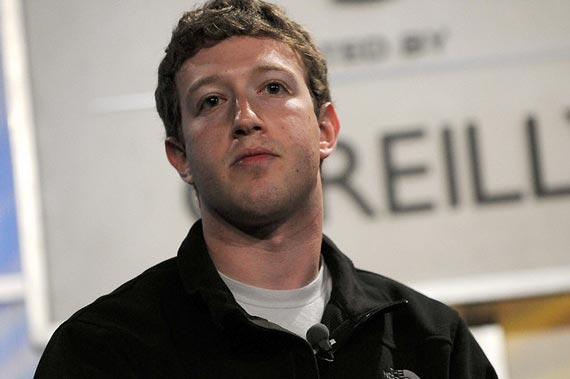
Image by jdlasica.
Facebook’s stock market launch is $10 billion, 6 times bigger than its closest competitor; you may have heard of them: Google. With Facebook likely to be valued at around $100 billion, this would make it bigger than Disney, Amazon, HP, Cisco Systems and McDonald’s. You’ve heard of those five as well, all founded many years before Zuckerberg was even thinking of applying to Harvard. Between Google, Microsoft, Yahoo! and Facebook, although only 4th in 2011 by the daily number of visitors, Facebook holds a well-deserved first place in ad revenue. Facebook had by the end of 2011 a projected revenue of $4.2 Billion. Well, although Apple made that amount in three weeks, it is still impressive for a company that doesn’t sell products, but only advertising space.
Investments
Different people and companies invested money in Facebook rise at various stages in it’s lifetime – all of their investments paid off. Here are some statistics which are almost one year old, meaning the value of their investments is actually higher today. Below you can see the name of the company or the persons, how much and when the investment was made and how much it was worth by June 2011. Unfortunately not all the valuations are known, so we will just name the investments and periods.
- Peter Thiel, Reid Hoffman (2004) – $500K – $10 Million
- Accel Partners, Mark Pincus, Reid Hoffman (2005) – $12.7 Million – $100 Million
- Greylock Partners, Meritech Capital Partners, The Founders Fund (2006) – $27.5 Million – $2 Billion
- Microsoft (2007) – $240 Million – $15 Billion
- Li Ka-shing (2007) – $60 Million – ?
- Europeans Founder Fond (2008) – $15 Million – ?
- Li Ka-shing (2008) – $60 Million – ?
- Triple Point Capital (2008) – $100 Million – ?
- Digital Sky Technologies (2009) – $200 Million – $10 Billion
- Elevation Partners (2010) – $120 Million – $35 Billion
- Goldman Sachs, Digital Sky Technologies (2011) – $1.5 Billion – $50 Billion
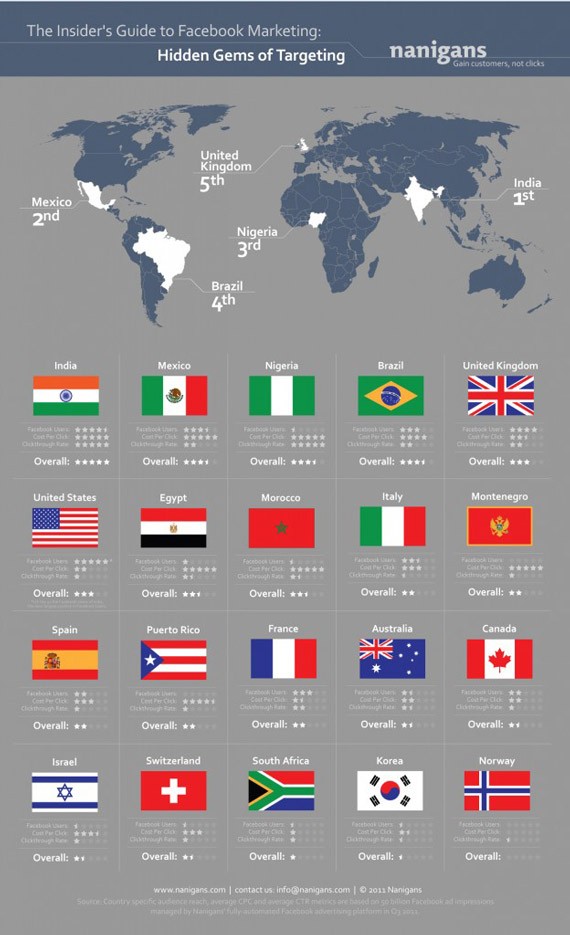
Now let’s move on to the “population” of Facebook, almost three times bigger than the population of the United States. Around 80% of the users on Facebook are from outside the US. Looking at the number of internet users vs. Facebook users from all the World’s regions can even give you goosebumps:
- North America: 272 million internet users – 168 million Facebook users
- Latin America: 215 million internet users – 115 million Facebook users
- Europe: 476 million internet users – 279 million Facebook users
- Asia: 922 million internet users – 153 million Facebook users
- Africa: 119 million internet users – 31 million Facebook users
- Middle East: 69 million internet users – 16 million Facebook users
- Australia: 21 million internet users – 13 million Facebook users
The statistics are from 2011, so the number of internet users and Facebook users has increased a bit since then. If Facebook is able to dominate Asia as they dominate the other regions, they will probably reach 1.5 Billion users in few years.
Zuckerberg and his history
None of this would have been possible without the work of Facebook’s co-founder and CEO Mark Zuckerberg. Born in 1984, today he is the richest 28 year old in the world and the youngest billionaire. He can speak five languages and dropped out of Harvard to head for Silicon Valley and run Facebook. He still attends board meetings in sandals and had business cards entitled “I’m CEO b***h”. Quite the rebel for such a successful business man. He owns 24% of Facebook and at Facebook’s valuation of $100B, this would mean $24 Billion in his pocket if the company was sold.
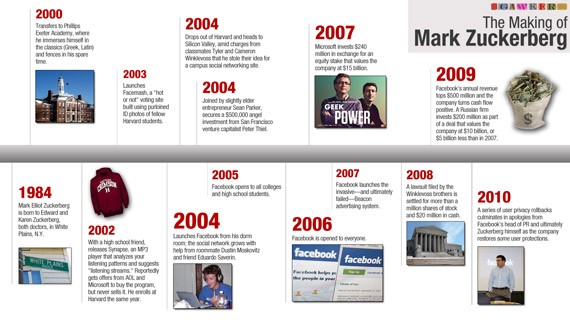
The online display ad revenue is another hot one for Facebook, owner of 17.7% of the whole market, with Yahoo! following in at 13.1%. Google is third with 9.3%, while Microsoft comes in fourth with 4.9%. Multiple other companies altogether own 55% of the market.
Financial growth and power
Looking at Facebook’s valuation throughout time, it is incredible how the Palo Alto company grew so much, from nothing to $10 Billion in eight short years. In 2004 it was only worth a few thousand dollars and was limited to Harvard undergrads. Only five months after its release Zuckerberg rejected a $10 Million offer from Friendster after Peter Thiel, PayPal co-founder, invests half a million dollars in the social media company. Facebook had already started to attract the attention of internet experts.
One year later the company was valued at around $100 Million after getting $12.7 million in funding from Accel Partners. Another year passes and Facebook rejects a $750 million acquisition offer and raises $2 billion from investors. In April 2006 Facebook is reported to be valued at around $525 million. One year later Yahoo! offers to buy the company for $1 billion, but the offer is declined. Although Facebook declines the accurate estimate of the investment worth, Microsoft raises $240 million for Facebook by the end of 2007.
After Facebook started to refuse more investing in the company, the value plummeted from $4 billion to half of it. After a short period Facebook starts to raise funds again from different investors and its value reached $9.75 billion by November 2009 and to more than $10 billion as of today.
If you think Facebook is just a money making machine for its founders and investors, you are in for a big surprise. Europe and the European Union have a lot to thank Facebook for. Zuckerberg’s company adds an estimate of more than $15 billion Euros to the European economy. Facebook’s activity and platforms support 36,000 jobs in Germany, 35,000 jobs in the UK, 34,000 in Italy, 22,000 in France, 20,000 in Spain and 5,000 in Ireland. Facebook creates jobs and has a powerful economic impact on the countries above and some others.
User behavior
Ten percent of all the pictures uploaded on Facebook are profile pictures. Women tend to change them every other week, while men every third week. Every year users upload more and more photos on Facebook. The number of uploaded pictures per year for each user has tripled since 2006.
130 friends is the average number of friends a person has on Facebook. The main reasons behind sending a friend request to somebody are knowing him/her in real life, having mutual friends, being part of the same business network and being physically attracted to him/her. Seven percent of people say they just add everybody they see on Facebook without any reason.
While adding friends gives us some obvious conclusions, removing friends comes with some surprises. 55% of the people who remove friends do it because of offensive comments and 41% because they don’t know the person well enough. Lack of interaction, depressing comments, trying to sell something, political comments or updating the profile too often are some other reasons behind people removing friends from Facebook.
While men tend to use Facebook for career/networks and dating, women usually sign up on Facebook to receive coupons, offers and give positive feedback.
Believe it or not, Facebook depression is something true and easy to notice. People with more friends tend to write longer updates, talk less about their families and are less emotional overall. The time of the day usually has a huge influence on how positive or negative the updates are. Between 9 AM and 2PM negative updates rise. At around 6 PM positive updates reach a daytime low. During the afternoon most of the updates are negative still. The statistics reach a scary conclusion: only during the early morning most of the updates are positive. As a matter of fact, positive emotions get lower and negatives get higher as the day passes by.
Half of Facebook’s user database logs in daily and usually comment more on negative updates. Positive updates usually receive less comments.
The users in Australia spend the most time on Facebook per month, around 6 hours and 52 minutes. USA comes in second with 6 hours and 9 minutes, UK is third with two minutes less per month. This is an average of 10 to 14 minutes per day per user.
Almost half of the users between 18 and 34 check their Facebook first thing in the morning, some of them even from their smartphones before getting out of bed. In the US “Facebook” was for the second year in a row in 2011 the most searched word on Google, with 2.11% out of all the searches. “Facebook.com” was also searched by many users, placing fifth in 2010. All Facebook-related searches on Google accounted 3.48% of all the searches in the US in 2010.
But why?
Now that was enough statistics. You can find even more by reading the infographics I included in this article. I am sure some of you still ask yourselves why is Facebook more or less dominating the internet? And while I am not sure I hold the right answer, here is my view on the topic.
I think Facebook is so popular because it is the only web page out there that meets our needs and demands. Whether we like it or not, Facebook helps us communicate more – not better, just more…and quicker. Interacting on Facebook is definitely much easier than calling someone. Moreover, it allows users to only be contacted when they want – if they do not have time for friends, they can just avoid checking Facebook. A person calling you can’t be avoided forever, but a Facebook wall post can be avoided as long as the user wishes to.
The capability of presenting ourselves as we want to be seen, not as we actually are, is something else that attracts people, especially the younger users. Many teenagers and college students look up to stars and actors and wish to have their lives. On Facebook it is possible. Just get a grip of Photoshop and edit your pictures so that you look younger, more beautiful and basically, perfect – manipulate them so that everybody who will see them (on Facebook obviously) will like and comment. You know you are lying to everybody – that is not the real you, but you still do it. It pleases you. It boosts your ego – and who doesn’t enjoy that?
In a way, Facebook is like Apple – the only difference is that one sells products that cost a huge amount of money, while the other offers you a social media solution for free. But they have something in common: they give users what they demand. You want a simple operating system? There you go, it’s called OS X. You want a nice looking computer, with a minimalist design which has never been seen before? Here you are, it’s called a MacBook. You want a product that will last for a long time if you take care of it? Here it is, we call it iPad. You want a sturdy music player? We have it and we named it iPod Shuffle. And so on. There is a reason behind Apple and Facebook being the most successful companies today.
Facebook does the same as the Cupertino based multinational. You want to be able to interact with people? You have the wall. You want to show pictures of yourself? There you go, this is how you can upload them. You want to have fun? We have Farmville and Zynga Poker. You want to always know what is happening? We call them Pages. You want to be able to have everything at the tips of your fingers? Here you are, Facebook Mobile and apps for every portable device.
Facebook, in its simplicity, solves the user’s needs. And this is what we all look for on Facebook. This is the main reason why we come back. We may like to closely follow our friends, play games, write funny status updates, follow companies’ updates or upload pictures of ourselves – whatever it is, Facebook makes it possible for us. This is the main reason behind Facebook’s world domination. And as long as they continue on this path, there is no way anybody will tear the giant apart, not even bad management.
Dare to think otherwise, why do you think such huge rise of Facebook happened pushing MySpace out of game? I would love to hear your opinion down below, in the comment section.
A bit more for you
This post may contain affiliate links. See our disclosure about affiliate links here.


